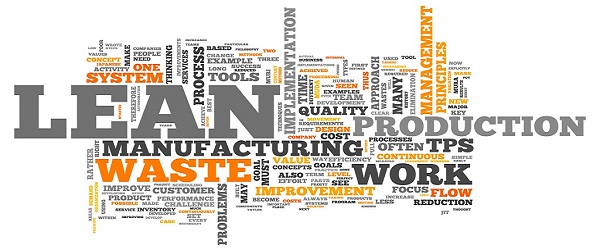
Many have tried to answer the question: What is lean manufacturing?
There are several definitions available.
One way of defining it is producing value (a product or a service) with less of everything (inventory, human effort, equipment and tools, plant floor, design and development, total cost etc) to maximize the profit, while delivering a product of highest quality when the customer needs it in the quantity needed.
The focus, then, is on seeing and eliminating the waste from all the aspects of the job.
See the Seven Wastes for a better understanding of this concept, based on the Japanese Muda (which means, you guessed, waste).
The way I answer the question “What is Lean Manufacturing” is this: It means a commitment to minimize the total cost (a waste-free operation) while offering a product or service that is focused on your customer’s success.
To achieve the lowest cost you will have to simplify and improve continually all the processes and relationships in an environment of trust, respect and full employee involvement.
What is lean manufacturing? It is certainly not about cutting headcount. And it is not just about the shop floor. It encompasses all aspects of the business. We say that it follows the whole value stream steps, from receiving an order, to delivering the product/service and getting paid for it.
Even beyond that, it stretches to your suppliers and your customers. It can expand as far as the ferrous mineral extracted from the earth and the customer that drives the car on the road (as an example).
Lean manufacturing philosophy is based on the Toyota Production System.
Taiichi Ohno, one of its creators, said decades ago that “the Toyota Production System is not just a production system.”
If you reduce lead time in manufacturing by 90% and can get product out in hours, but order entry takes four weeks, then you aren’t really moving forward in the market.
You must attack every corner of the business from accounting to human resources to manufacturing.
Does it sound hard to achieve? Don’t lose heart. Rome was not built in one day. Just take it step by step with those thoughts on your mind: the customer and the total cost.
Toyota developed a manufacturing model based on three pillars:
- Just-In-Time Production
- Build In Quality
- Respect for People
Think for a moment about these concepts.
To me they mean a balanced approach to manufacturing, focused on the customer (JIT), the business (Quality, therefore cost) and the employees (people producing value).
The foundation upon which the pillars rest is the basic stability of your business. What it means is that you start with a product or service that can be produced consistently on equipment that provides the parameters required with a workforce that is knowledgeable about what they have to do, using proven methodology.
It comes down to the 4M (man, machine, material, method).
Once you have that, you can start improving everything using kaizen / continuous improvement principles. You can picture it as the roof of the pillar structure.
I hope this answers the question to “What is Lean Manufacturing”.
